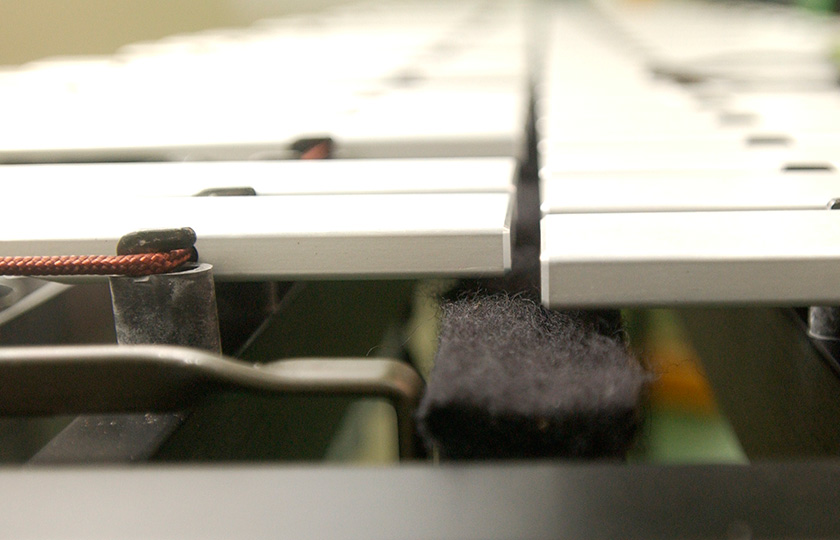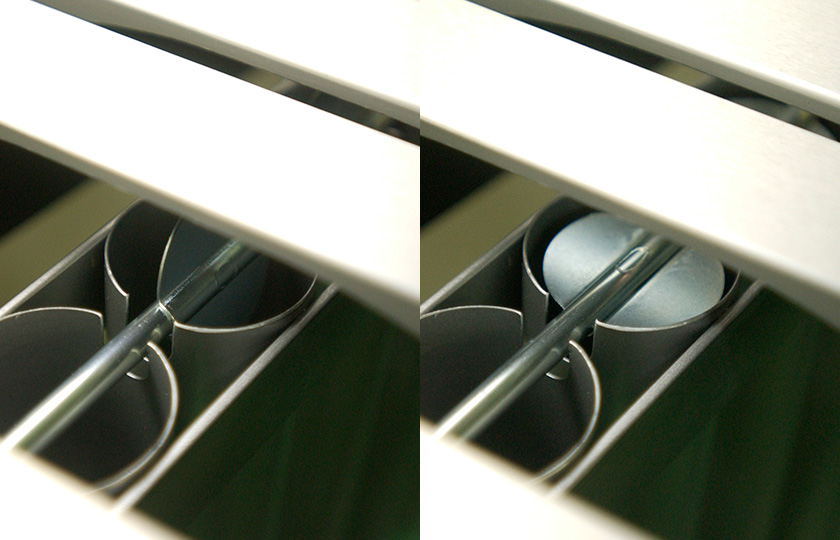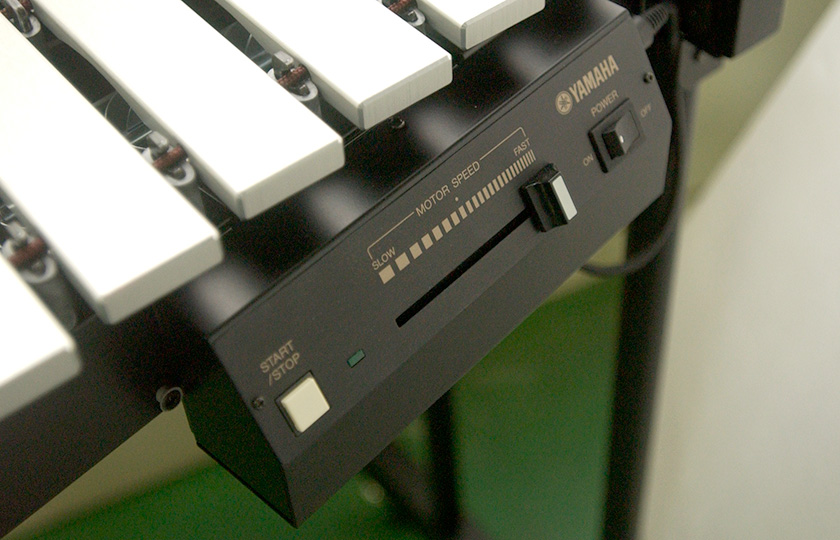Trivia
The vibraphone and its spinning fans
The vibraphone, whose tone plates are made of metal, produces, once struck, notes that last a long time and disappear gradually. However, there is a lack of the density of wood, and the bars are uniform, which results in the sound that is produced sounding non-organic. To add variations to the notes, the instrument is thus built with vibrating fans that add a vibrato effect. Above the resonator pipes runs an axis with numerous fans attached. The flow of electricity along this axis makes the fans spin, repeatedly opening up and then closing off the pipes. The sound grows louder when the resonators are open, giving rise to waa-waa shifts in the notes. The rotation speed can be sped up or slowed, allowing the player to produce the intended amount of vibrato.
The damper is used to halt the long-lasting ringing of the notes. When a pedal is released, it touches the tone plates, stopping the vibrations. Both the fans and the damper are mechanisms that the marimba-whose notes do not last so long-does not have.

A damper, which can be used to stop the vibrations of the tone plates

Fans, which open and close

A unit for adjusting the speed of the fans
The sound when the fans are spinning (typical)
The sound when the fans are not spinning
Musical Instrument Guide : Marimba Contents
Origins
Structure
- What kind of instrument is the marimba?
- Inside and outside the resonator pipes
- There is craft to the design of the tone plates, too
- [Experiment1]Tone plate sanding depth and sound pitch experiment
- [Experiment2]Tone plate sanding location and sound pitch experiment
- [Experiment3]Try changing the material of the resonator pipes
